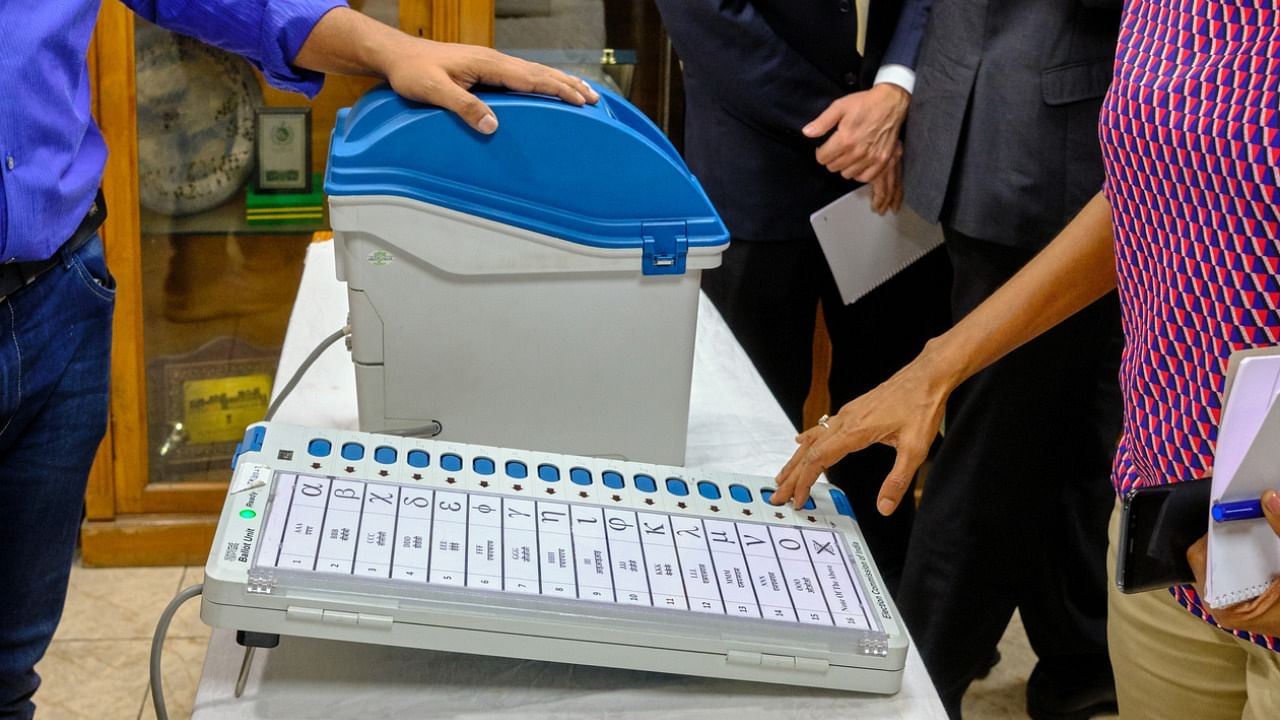
With the Election Commission of India (ECI) announcing the Assembly poll dates for Kerala, West Bengal, Tamil Nadu, Assam and Puducherry, voting for the five assembly elections is set to begin from March 27.
Electronic Voting Machines (EVMs), familiar to voters who have voted in either the Lok Sabha Polls or any State Assembly polls, has often been under scrutiny as allegations are that it can be tampered.
But what is an EVM and how does it work? Who makes it? Here's a handy guide on everything related to EVMs:
What is an EVM?
An EVM is an electronic device to record votes. It consists of two Units – a Control Unit and a Balloting Unit – joined by a five-meter cable.
The Control Unit is placed with the Presiding Officer or a Polling Officer and the Balloting Unit is placed inside the voting compartment. Instead of issuing a ballot paper, the officer-in-charge of the Control Unit will release a ballot by pressing the Ballot Button on the Control Unit. This will enable the voter to cast their vote by pressing the blue button on the Balloting Unit.
Who designs/manufactures EVMs?
EVMs are devised and designed by the Technical Experts Committee of the ECI in collaboration with two public sector undertakings: Bharat Electronics Ltd., Bangalore and Electronic Corporation of India Ltd., Hyderabad. The EVMs are also manufactured by those two undertakings.
What are the benefits of using EVMs?
EVMs eliminate the possibility of casting 'Invalid Votes', which during the paper ballot regime was noticed in large numbers during each election. In the past, the number of 'Invalid Votes' exceeded the winning margin many times, leading to numerous complaints and litigations. EVMs remove that issue and enable a more authentic and accurate reflection of the choice of the electorate.
EVMs help save an enormous amount of money and resources by dispensing individual ballot papers with just one per polling station, which is controlled by the officer-in-charge of the Control Unit.
The counting process is very quick and the result can be declared within 3 to 5 hours as compared to an average of 30-40 hours using ballot papers.
How many candidates can EVMs cater to?
In the case of M2 EVMs (2006-10), EVMs can cater to a maximum of 64 candidates including NOTA. There is a provision for 16 candidates in a Balloting Unit. If the total number of candidates exceeds 16, more balloting units can be attached up to a maximum of 64 candidates by connecting 4 Balloting Units.
In the case of M3 EVMs (Post-2013), EVMs can cater to a maximum of 384 candidates including NOTA by connecting 24 Balloting Units.
How many votes can be cast in an EVM?
An EVM can record a maximum of 2,000 votes.
What happens if the EVM in a particular polling station goes out of order?
If an EVM of a particular polling station goes out of order, the same is replaced with a new one. The votes recorded until the stage when the EVM went out of order remains safe in the memory of the Control Unit and it is perfectly fine to proceed with the polling after replacing the EVM with a new one and there is no need to start the poll from the beginning.
On the counting day, votes recorded in both Control Units are counted to give the aggregate result of that polling station.
How can EVMs be used in areas where there is no electricity?
EVMs do not require electricity as they run on an ordinary battery. The design also ensures that there is no possibility of getting an electric shock as there is no external power connection to the devices.
As many as 18.68 crore voters will be eligible to cast their votes at 2.7 lakh polling stations for 824 assembly seats across Assam, West Bengal, Kerala, Tamil Nadu and Puducherry.
Votes for the polls in the four states and one union territory will be counted on May 2.
The elections for the five assemblies are expected to witness a determined attempt by the BJP to put a strong show, including in Assam where it is already in power, as well as in West Bengal, Kerala, Tamil Nadu and Puducherry where the saffron party has been pushing hard in recent years.
(With inputs from PTI, ECI)